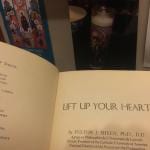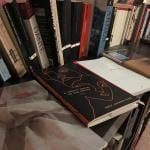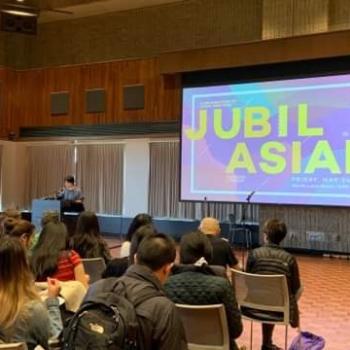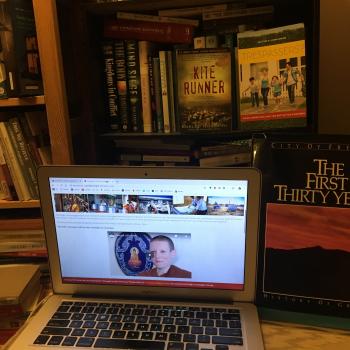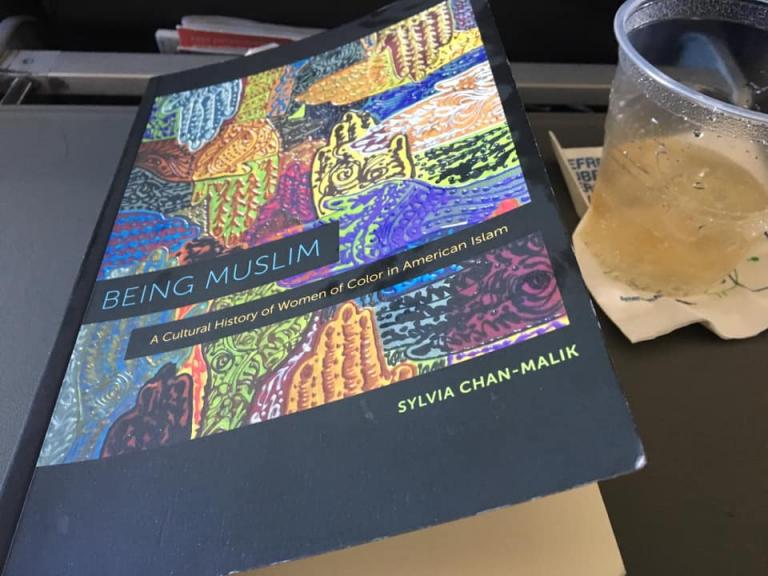
Over the next three weeks, I am teaching my friend and colleague Sylvia Chan-Malik’s book Being Muslim: A Cultural History of Women of Color in American Islam in my course on Asian American religions. Today was the first day. I could, as some friends have requested, write a full scale review of the book. Perhaps someday I will. But in keeping with the rule that only what is unpublishable elsewhere should be put on a blog as a record of thoughts in progress — meaning that maybe I will rework them in some other way — I wanted to offer my reflections on the experience of encountering this book and then having to teach it.
The truth is that I was always going to teach this book in my class. I will not say that I know Sylvia well — we have had conversations at several conferences, though the last encounter (which I’ll talk about in a bit) was deeper than the rest — but I knew that she has been working on this book, and I was always going to teach it when it came out. We used to spend four weeks on Anne Fadiman’s Spirit Catches You and You Fall Down in that class, a book on the practices of a Hmong family with a daughter with epilepsy as they confront a secular medical system that writes off their narration of the world, and of course, that too is a placeholder for when my friend Melissa Borja’s book comes out on Hmong communities and their interaction with the world of spirits. Now we spend two on that, and two on Chan-Malik, with other examples peppered through, as students prepare a project on how practices in communities loosely defined as groups of people tell a story that describes worlds of spirits over against an age of secularization and social formations that orientalize them.
To me, the course on Asian American religions, which is a third-year course, is a theory and method class, a quarter-long exercise in examining how ‘Asian religions’ have been cast through the circuits of popular culture in an orientalizing and Christianizing lens (so we read Jane Iwamura’s Virtual Orientalism, watch Kung Fu Panda, debate Frank Chin, and plough through Gary Okihiro’s Island World) and then seek to understand the way that practices in Asian American, Pacific Islander, and indigenous communities tell stories about the world writ large, one that often teems with spirits and gods, heroes and ghosts, culminating in the project. Fadiman’s account offers an example of this latter exercise in working through the practice of everyday life might be done, and so does Timothy Tseng’s piece on Chinese American Protestants, as does Russell Jeung and his colleagues’ latest work on familism among non-religious Asian Americans. We also revisit Okihiro in Hawai’i, and we watch Eve and the Firehorse. Chan-Malik does this too, and beautifully.
I’m glad that Chan-Malik’s book is out. It teaches so well. My students and I agree that she is a master teacher in her own right: she says what she is going to do, and then she does it, which makes the connection between practice and theory abundantly clear. We began by asking, since we are an Asian American studies course, what the point (as in the spot, as opposed to the purpose) of orientalization was in the story that she tells. The first three chapters, after all, are about black Muslims in America, mostly because they are the people who inhabit the historical archive of the period up to the 1980s through which Chan-Malik writes. In chapter 4, Chan-Malik switches to a discussion of the orientalizing discourse of the veil, especially as it was construed in white feminist engagements (and therefore American imperial manipulations) of the Iranian Revolution in 1979, and then how this overdetermined object fed into the period of paranoia following September 11, 2001. In the fifth chapter, the story turns to the everyday lives of four Muslim women from around the world whose daily practices are geared toward social justice, and in the conclusion, Chan-Malik talks about learning her own faith as a convert to Islam at Soul Flower Farm on the East Bay in California (which is the part of the world where I am also from). We’ve only read the introduction and the first two chapters, though, and so for us, the book is really still about black women. How is this Asian American? we asked.
Two points came up. One was that Muslim women themselves have been categorized in popular culture as alternatively ‘terrorist,’ ‘veiled,’ and ‘black radical,’ and when you boil these hyperreal images down (and we know what the hyperreal is because we’ve read Jane Iwamura), they are racialized stereotypes of Arabs and South Asians, two orientalized figures that do not do justice to the actual diversity of the ummah. The second was a scene that the students began to describe from Chan-Malik’s second chapter. It began hazily: Muslim women are cast by a CBS documentary The Hate That Hate Produced as having their agency taken away from them as they seem surprisingly willing to be subordinated to domestic spaces. As Chan-Malik shows, that is not exactly the case because those acts of home-building are a form of insurgent domesticity, as she calls it. But where? I asked. We drew blanks. The Nation of Islam? one student piped up. Bingo, yes, and we talked about Elijah Muhammad and Malcolm X and their formation of a movement that argued for black self-determination with an Islamic theological praxis. But what is the scene that frames that chapter? I asked. The students really were stumped now.
This was my opportunity. I asked them if they knew who James Baldwin was. They did not. I did not either, in high school. I told them the story that I wrote out when I watched If Beale Street Could Talk the other week, so I will not trouble myself to retell the narrative of the time that my English teacher put The Fire Next Time on our desks and asked us to write a poem on it, and not understanding at all what was going on in the book, I wrote a poem about the Chinese church, got an A+, and formulated a career plan to study Chinese Christians that has now landed me in academia. The truth is that my connection to the text as a sixteen-year-old Chinese American evangelical was so completely dismal that not only did I not realize that there were black Muslims (and not understand for the longest time that Baldwin was describing the Nation of Islam as a nation and not as a religion that was nationalistic), but that when I got to the scene where Baldwin is having dinner with the Honorable Elijah Muhammad and the women bring in the food, serve them, and whisper in inaudible voices among themselves, I felt sorry for them for being oppressed by their religion. Sure, over the years of graduate school and much conscientization therein and thereafter, I came to agree with Claire Dwyer, Saba Mahmood, Lara Deeb, Jasbir Puar, Anna Secor, Banu Gökariksel, and Patricia Ehrkamp, among others (oh yeah, Judith Butler too!), that such a line of thinking was not only Islamophobic but a problematic kind of feminism that did not take the agency of the acting women seriously. But what struck me as I read Chan-Malik — which is how I came to formulate the lesson plan that included the story of my own ignorance as I prepared for this class (alas, my confession is that telling the story was planned all along, though I feigned to have arrived at it organically) — was that she uses precisely this scene to frame that chapter on insurgent domesticity and that she re-reads Baldwin to show that it is the women who actually operate the Nation of Islam, with the movement having given them liberating purpose outside of a world where their bodies are vulnerable. In fact, Malcolm X takes it as such a betrayal that Elijah Muhammad sleeps with some of these women that he quits. Two years later, he’s dead.
What I am saying is that Chan-Malik’s reading of these practices served as a vehicle for me to approach what she is talking about personally, which is to say that it gave permission for the students to engage in a personal way with their projects too. The personal and the scholarly cannot be sundered because a scholar is a person, and whether or not we are personally related to the projects that we do, there is a measure of one’s personhood that comes into confrontation with the practices, communities, and stories about the world that we study. I suppose Chan-Malik has always known this; her entire book is framed with the work of women-of-color theorists who, despite the debates between black feminists, Third World feminists, and womanists, more or less seem to agree that it is the everyday lives of oppressed peoples that are worth studying in terms of understanding how small-scale practices offer glimpses of liberation that is often spiritual. This is why I love that Chan-Malik ends the book with her own experience of Soul Flower Farm, a community farm where Islamic practices are incorporated as part of a larger Bay Area network of Muslim social and environmental justice organizations. Everyday life at the farm is where a sense of the self as loved and loving, as part of communities that are life-giving, is learned and practiced and struggled through.
And this, then, gets back to that conversation I had with Sylvia at a conference on Asian American religions last July. Her book had just come out, and she was giving a launch talk on it. I came in late. She was in the middle of framing her talk with a centuries-old Islamic quote that I cannot remember (probably because I was late, and also because I don’t have my notes from it in front of me), but it was from a Muslim woman scholar and it had something to do with knowledge and prayer. Perhaps if she, or anyone else who was there, reads this reflection, they can fill in this gap, and that will probably generate another series of reflections. In any case, she read it and then dove into the first quote of her book, a poem by Sonia Sanchez entitled ‘WE ARE MUSLIM WOMEN.’ The third stanza, which she emphasizes in her book (p. 9), especially strikes me:
WE ARE MUSLIM WOMEN
dwellers in light
new women created from the limbs of Allah.
We are the shining ones
coming from dark ruins
created from the eye of Allah:
And we speak only what we know
And we do not curse God
And we keep our minds open to light
And we do not curse God
And we chant Alhamdllilah
And we do not curse God
WE ARE MUSLIM WOMEN.
As I sat with her afterward, I told her that these two quotes, both about knowledge and prayer, had especially struck me, because as a person who has been undergoing mystagogy since my conversion to an Eastern Catholic church from the circuits of evangelical Protestantism, I too have had to re-evaluate how I know through how I pray. She said that she resonated with that, and later also said some nice things about wanting to read my book on Cantonese Protestants when it comes out, and that was that, but the point is that there is something in here, in this tradition of practice that is so different from mine — indeed, that has at many points in history been at enmity with mine, as Byzantine Christians still talk in very contemporaneous terms about the sacking of Constantinople and the wars of the Cossacks against the Ottomans (it must be a comment on me that I know some people, some who are even Chinese, who remind me of the old princess in the first episode of The Romanoffs) — that resonates. I do not want to make any theological statements here — unlike some of my colleagues who actually work in Muslim-Christian studies, I am not smart enough to do such theology — but perhaps at a deeper level, beneath these traditions, there is something that we hold in common in these womanist convictions. For womanism is not an ideology, and it is not an identity; arising from a deep and slow contemplation of the practices of everyday life, it is the spiritual observation that there is something fundamentally constitutively Woman about reality, and that is why patriarchy is but one of the vectors of oppression that is named as colonial (another, of course, being the secular).
What I am saying is that I came away from Sylvia Chan-Malik’s talk inspired to pray my way to a deeper contemplation of the world that I attempt to describe in my scholarship, and in reading and teaching her book, I am coming to a deeper appreciation of how she does it, and I think my students are too. Like the speaker in Sonia Sanchez’s poem, I too can only speak of what I know, which is why I have disclosed my own ignorance and exposed my own searching. In this searching, I also do not curse God. I ask instead to dwell in his light, which is what the women described by Chan-Malik do in their own different, separate, and even flawed ways — and indeed, in the ways that the womanists in their various theological traditions have also done. It is a rare thing for a book in a different tradition of praxis from mine will move me to prayer in my own. But this is what Sylvia Chan-Malik’s work has done for me.

